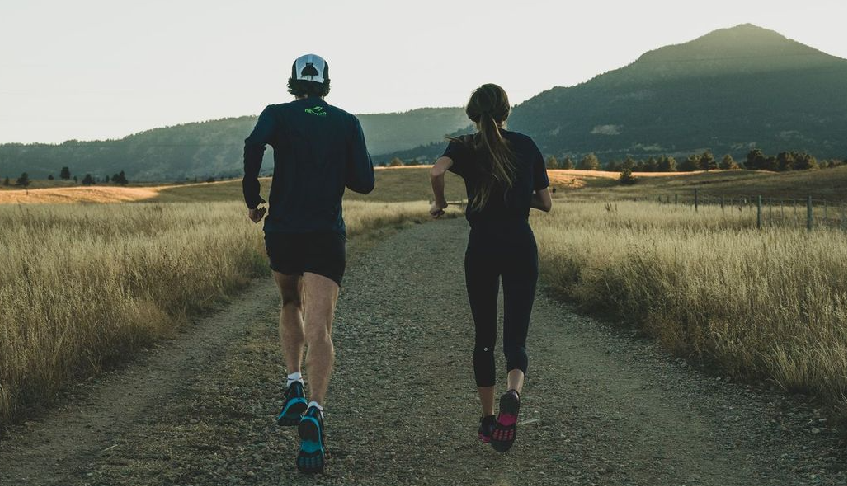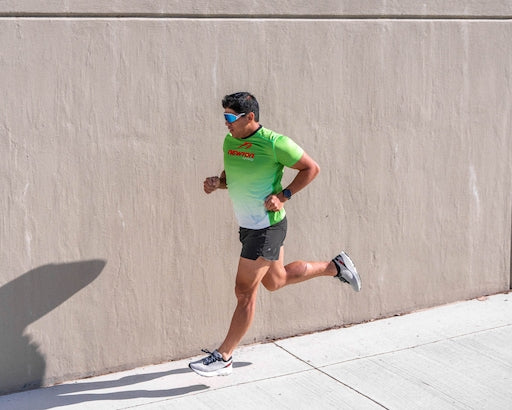
A Trail Runners’ Guide to Unforeseen Dangers
training tips1 January 2024
Every trail runner knows the joys of spending the day out in the woods, running from hill to mountain to valley, enjoying every step of the way. But as fun as it is, it also poses its dangers.
How do you stay safe against the unforeseen dangers of trail running? From wearing a medical alert bracelet to watching where you step, here’s how you can stay safe while out on the trails.
The Unseen Root or Rock
One of the most common dangers while trail running is the minor obstacles which can cause you to trip, fall, twist an ankle, sprain a wrist or worse. How do you avoid getting injured with so many rocks, roots and sticks — not even mentioning all the uneven territory?
The best way is to keep your eyes peeled. You need to remain aware while you’re out running, both of what’s immediately in front of you and where you’re going. The most common rule of thumb is to keep your vision 10 feet ahead of you, watching the ground ahead so you can anticipate oncoming obstacles.
You can also perform exercises for trail runners. While they won’t prevent injuries, in the event you trip and fall, they can increase your chances of ever falling in the first place. Most of these exercises involve strengthening of the ankles, quads, feet and core — all of the essentials to maintaining balance and improving your footwork.
Lastly, you should wear medical ID jewelry while out on the trail, as it can protect you in the event of an accident. Fall and hear a snap while you’re on the trail? It may not be safe for you to get up on your own, but a stranger may come by. If someone finds you, they can identify you by your medical alert bracelet and get you proper medical attention.

Mountain Lions and Bears, Oh My!
A common fear for many trail runners is the wild animals they’ll come across on the trail. Snakes, mountain lions, bears and more can cause potential dangers out on the trail. To stay safe, you need to know how to react when you see one of these animals — and whether or not they even live around you in the first place.
First, mountain lions exist almost exclusively on the West Coast and in the central, mountainous states in the middle of the country. California, Colorado and the Rocky Mountains tend to have the most sightings, with no mountain lions being seen anywhere east of the Rockies except for North Dakota, South Dakota, Nebraska and Florida.
Identifying bears is another problem, as different bears cause different concerns. For instance, black bears tend to be big softies, unless you’re the one to be aggressive at first. Most black bears may charge to stand their ground, but they eventually stand down and run away once they realize you’re not a threat. All you need to do is stand your ground in response to their actions.
Brown bears are a larger concern, as they tend to be far more aggressive, seeking to hunt animals they see as weaker than them.
So how do you protect yourself against mountain lions and brown bears? The rules are generally the same.
- Make yourself look as big as possible.
- Don’t show fear.
- Don’t run.
- Stand your ground.
- Playing dead? Yes with brown bears, no with mountain lions.
- Fight back as a last measure.
A Sudden Shift in Weather
Another major problem for trail runners is weather and unpreparedness. As mentioned elsewhere, the best thing you can do is prepare. You always need to prepare before you get out onto the trail.
Whether it’s an unforeseen downpour or sudden snowfall, called snow squalls, either can truly put you at danger. So how do you protect yourself against them?
Hear thunder and see lightning? Get into a covered area, but stay away from hiding directly under trees as they are commonly struck by lightning.
All other weather — the precipitation kind — you need to have the right gear to protect yourself. The most common is a waterproof jacket. While it will be uncomfortable if your legs and feet get wet, you are truly in danger if your core and hands get soaking wet. Windproof and waterproof jackets protect your clothing against such things.
If your feet do happen to get wet, try to get off the trail to safety as soon as you can. Wet shoes and socks could lead to the onset of hypothermia. If you have no means of immediately getting off trail, you’ll want to find somewhere dry to sit. Then, take your shoes and socks off. If you can’t dry your shoes, at least wring your socks out to get as much water as you can out of them.
Night Quickly Approaching
A serious problem for people running on deep-wood trails and in the mountains is they may lose their way while running. While that could mean just having to turn around after 15 minutes, sometimes it could spell worse news. This is especially true for anyone running into the evening.
Evening runners who get lost on-trail may find themselves still lost as night approaches. If they’re accustomed enough with the general trail, they may be able to find their way out. But that’s only if they can see the actual trail they’re looking for.
To avoid the dangers of getting lost at night, you should always have a headlamp stored in your bag or pack.
Headlamps for runners are a simple way to stay safe while running at night. They can also be a real lifesaver for early-morning runners, as they’ll allow you to more easily see roots, rocks and other obstacles along the way.
Take your time before you get out on the trail. It’s always better to be prepared when heading out into the woods, forest or mountain. So take your time and make sure you bring along all you need — tools, medical alert bracelet, water, snacks, phone, headlamp and more.


